Whether you live in a high-rise apartment or a sprawling suburban home, soundproofing can be an issue that affects all home types.
You may be addressing exterior noise, like traffic and outside businesses, or interior noise, like loud neighbors or noisy kids.

Regardless of your exact arrangement, finding the cheapest way to soundproof a room can be a quick and effective way to get some peace and quiet.
There are many easy ways to soundproof a room that don’t involve holes in an existing wall or permanent fixtures.
How to Soundproof Your Room?
To soundproof your room and reduce noise you need to absorb the sound. You can accomplish this by adding acoustic foam and acoustic panels on walls, hang blankets over sound entry points, and position furniture and rugs to help absorb sound. Place the sound absorbing material within the direct path of the sound’s source.
Below we’ve listed some of the best performance and value products you can buy to quickly install for a marked reduction to sound and noise.
| PRODUCT | DETAILS | ||
|---|---|---|---|
BEST VALUE  | Acoustic Foam |
| Check Price |
EASY INSTALL  | Acoustic Blankets |
| Check Price |
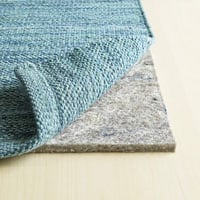 | Sound Proof Curtains |
| Check Price |
BEST OVERALL  | Acoustic Panels |
| Check Price |
 | Thick Sound Absorbing Rugs |
| Check Price |
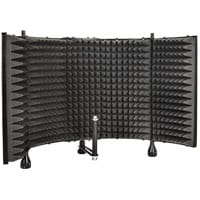 | Sound Booth |
| Check Price |
How to Make Your Room Soundproof from Inside
When you’re starting to consider soundproofing a room, location is everything. Making your room soundproof from the inside isn’t as hard as you might imagine.
There are three critical points that can make a room feel noisy, so be sure to address each location to truly soften the noise in your space.
- Source of the sound
- Entry point
- Reflection point
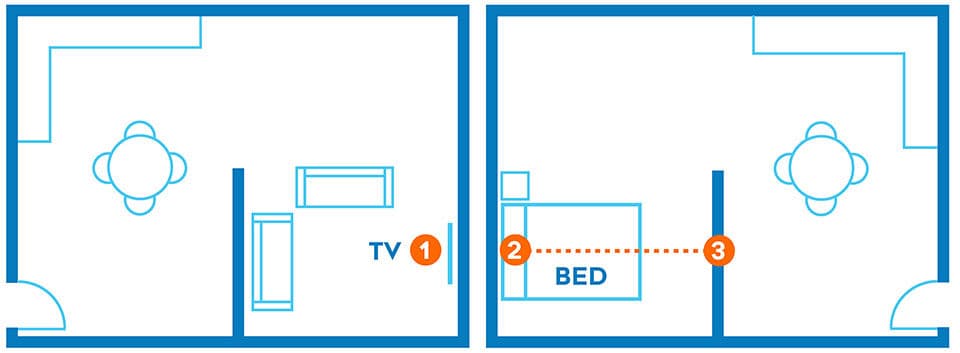
1. The source of sound
Is it one specific noise that you’re trying to conceal, like a television, instrument, or traffic? This type of sound can generally be contained to one specific spot. The first step to concealing the sound is to identify the source.
Once you know exactly where it’s coming from, you’ll be better equipped to address it and dilute or mute it.
2. Entry point
The entry point is the area in your space where the sound enters your room. Again, this may be an exact point that is adjacent to the source of the sound or it could be an entire existing wall, like in the case of shared walls in apartments, condos, or duplexes.
Exterior windows are also common entry points for unwanted noise.
3. Reflection point
After the sound enters your space, it will reflect back at the same angle of entry. In the example above, this might lead you to do soundproofing techniques on the headboard wall as well as the wall at the end of the footboard.
Since the angle of entry is a straight line in this case, the sound will likely bounce back and forth between the headboard and footboard until it dissipates.
Below we will go over different methods of cheap and easy ways to soundproof a room from the inside. For effective sound masking, you will want to implement soundproofing techniques at all three of the points listed above.
RELATED – Can’t stand noise? Robot vacuum cleaners are quiet compared to more traditional vacuum cleaners. Check out our full list of robot vacuums we’ve tested here.
Cheap Ways to Soundproof a Room
One of the easiest ways to mask unwanted sound in a room is to add furniture and natural decor to your space. Sound bounces off of hard surfaces, like hard flooring or blank existing walls.
To kill sound in its tracks, consider adding finishes that the sound can be absorbed into.
Here are three of the cheapest ways to soundproof a room using furniture and decor.
1. Use curtains and window treatments
Not only do curtains serve as a great visual barrier against nosy neighbors, but it offers dual purpose sound dampening as well.
Hanging plush, thick drapery helps to absorb extra sound from the outside as well as unwanted traffic noise.

On the inside, these same curtains help to absorb ambient noise that floats around the interior of the space.
2. Add area rugs
To mask sound coming from lower neighbors in an apartment situation, consider adding thick area rugs to your main living spaces.
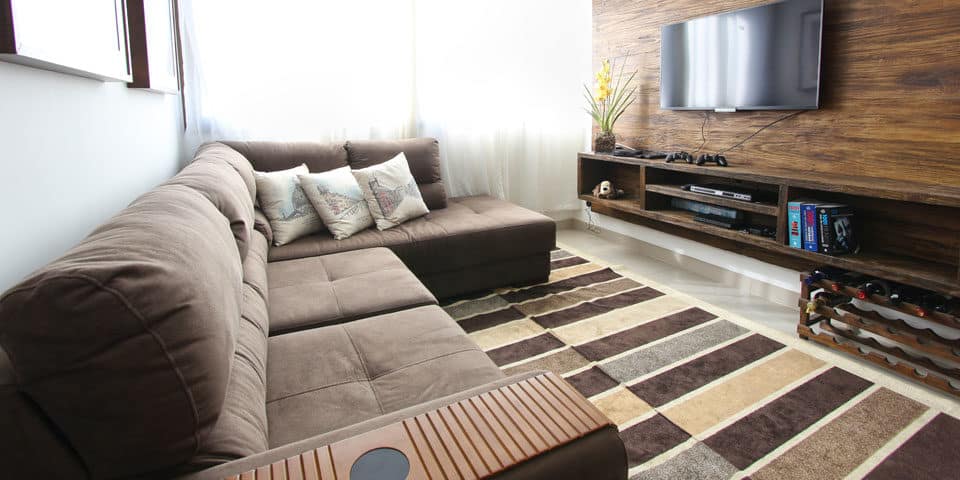
Large and thick area rugs can help to soundproof your room
Adding a pad under the rug is another way to enhance the sound masking, without taking up additional square footage.
3. Add upholstered furniture
Adding upholstered furniture to your space gives more areas for sound to be absorbed into, and keeps it from bouncing as much. If you don’t have room for more furniture, try adding thick blankets or plush throw pillows to your existing areas.
Soundproofing a room from the inside is all about dampening noises by targeting them at the entry or reflection point.
How to Soundproof a Room for Free (with Blankets)
Speaking of blankets, if you don’t have the budget to buy extra sound dampening furniture, curtains, or rugs, you can use blankets as a free soundproofing alternative.
- Get Blankets – Gather up all of the blankets and quilts you have around your home. Remember, the thicker, the better!
- Sound In or Out? – Decide if you are trying to keep sound in (i.e., sound that you’re making) or keep sound out (sound that’s coming from the outside)
- Sound In – If you want to keep the sound in, you’ll need blankets on all sides.
- Sound Out – If you want to keep the sound from the outside out you’ll need to put blankets over the source of those sounds. Most likely, that means a specific wall, door, or window.
- Affix to Wall – In both cases, you’ll want to hang the blankets using tacks, finishing nails, or screws, depending on how heavy they are.

In addition to your blankets, if you have any large pieces of furniture in your room, you can position those against the appropriate existing wall to help minimize sound. Bookcases and headboards work great for this.
Best Ways to Soundproof a Room
Have a bigger problem and added furniture just isn’t cutting it?
For especially noisy neighbors, kids in the band, or housing directly adjacent to high-traffic areas, you may way to consider a more powerful solution.
If you aren’t on a tight budget, check out this guide by HouseLogic.com. Or click here if you want to tackle your soundproofing project at the construction level.
However, if you are on a budget, continue reading below.
The following solutions may not be as cheap or dual purpose as those mentioned above, but they are more effective at soundproofing a room, regardless of what the source of sound is.
1. Hang acoustic panels
Depending on the size and quality, hanging acoustic panels can be quite expensive, but it’s certainly one of the best ways to soundproof a room. Acoustic panels are excellent at absorbing unwanted sounds and you can hang them like art or accents around your room or apartment.
These panels are generally pretty lightweight and come in a variety of colors to match your decor. Inexpensive acoustic panels, like these foam panels, are easy to install and help to absorb unwanted sounds.

For a little extra cash, there are larger acoustical panel sizes that can be installed with heavy duty hardware or flush mounted z-clips. These can be connected to make a single large panel or used independently.
Want to use panels, but aren’t sure where to hang them?
As a general rule of thumb, you want to place panels on the opposite wall of the source of sound for the maximum absorption.
Sound reflection follows the same laws as light reflection and bounces back at an angle equal to the angle of the incoming sound.
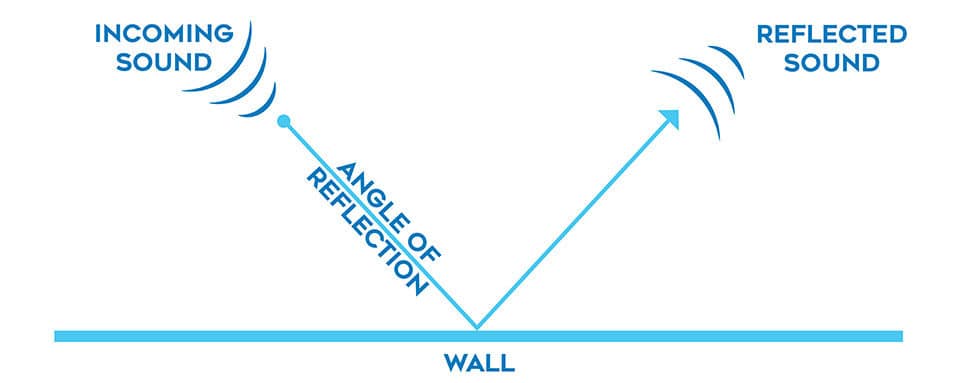
2. Cheap Soundproofing Foam
If you’re on a tight budget, you can accomplish great things with cheap soundproofing foam. In recent years, soundproofing foam has come a long way, and it’s incredibly inexpensive on Amazon.
For a relatively low cost, you can find inexpensive soundproofing foam. Better yet, you can usually find soundproof foam in a variety of colors, so it doesn’t have to be purely functional. It can add a nice aesthetic touch to your room, while also achieving your soundproofing needs.

3. Use a sound booth
If you’ve got a higher budget and can identify the source of sound within your home, you may want to consider using a sound booth. This helps to isolate the sound before it has a chance to bounce around your space.
An example of this type of solution would be this customizable sound booth. Depending on the size, a sound booth can range from $50 up to $2,000 or more.
RELATED – Turn your closet into a sound booth.
Alternatively, if you’re recording music or vocals, you may need to step up the budget a bit further and rent a recording studio space.
For professional recording (or even prosumers), the logistics of noise isolation are much easier to control in a studio space designed specifically for that purpose.
4. Easiest Way to Soundproof a Room
If you’re trying to soundproof a room, chances are that you may be looking for something that is just plain easy. In many cases, people wanting to soundproof a room are in temporary living situations (like apartments or rentals) and can’t spend a lot of time or money on complicated strategies.
In other cases, the annoying sound is actually temporary, like construction work or a neighbor’s noisy project. One solution for these types of annoying noises is adding a little background noise.
5. Soundproofing Alternatives (add background noise)
Adding background noise is an incredibly easy way to soundproof a room— and it’s inexpensive also.
Playing relaxing instrumental music or adding some white noise are great ways to held dilute or mute unwanted sounds.
When there’s something else to listen to, it becomes easier to drown out other annoying sounds, even if they’re still happening.
Three different approaches to this technique include:
- Sound Machines
- Air Purifiers (see our full list of reviews here)
- Fans
Sound Machines
Many sound machines can offer a variety of background noise, including white noise, nature sounds, rain, and more.
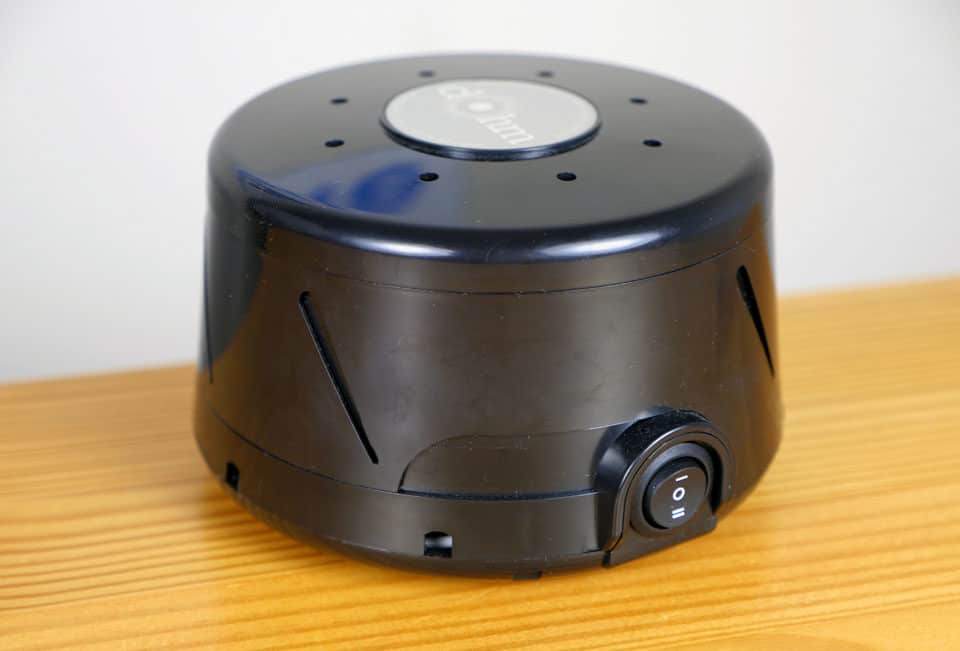
While sound machines don’t remove the noise entirely, they are an easy way to mask annoying noises and can be especially useful for temporary situations.
Air Purifiers
Adding an air purifier is another great way to mask unwanted sounds while also cleaning the air. If you like the idea of a dual-purpose device, air purifiers can be pretty loud at high speeds and help to remove unwanted air particulate.
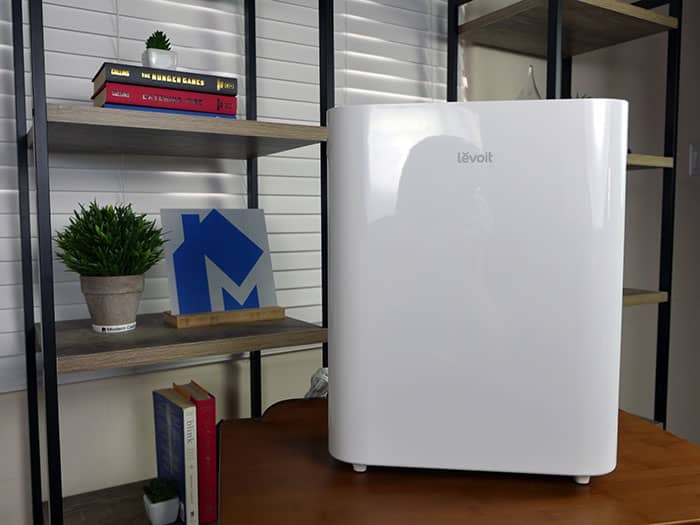
The Levoit Vital 100, for example, is a good mid-size purifier that has the power to generate enough noise to cancel out other sounds in the room.
Fans
If you don’t need or want to purify your air, a ceiling fan, box fan, or other modular fan is a great way to add air flow and white noise to your room.

It doesn’t need to be fancy or expensive. You’re really just looking for that little extra white noise to help your brain drown the annoying sounds out.
Frequently Asked Questions
It’s possible to completely soundproof a room, but you’ll need to address the source of the sound, its entry point, and its reflection points.
Depending on these factors, you may use a sound booth, acoustic panels, acoustic foam, curtains, and/or window treatments to block incoming noise.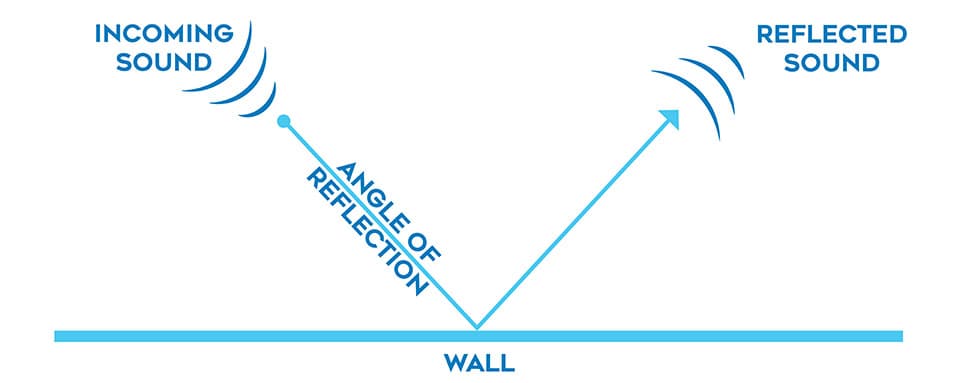
The best way to stop outside noise in your room is to use a sound booth or add acoustic foam and acoustic panels on walls. You may also rearrange the furniture, carpets, and rugs to help reduce incoming noise. Depending on where the noise comes from, another option is to hang blankets over sound entry points.
Before getting started, try to determine the source of the sound, its entry points, and its reflection points. For example, if you live on a noisy street, you may use curtains and window treatments to mask unwanted sound.
The cheapest way to soundproof a wall is to use thick blankets and quilts. To block outside noise, put blankets over the walls, doors, or windows, depending on where the sound is coming from. To keep the sound in, hang blankets on both sides of the doors or inside walls.
Likewise, you may use cabinets, bookcases, and other large pieces of furniture to soundproof a wall. Place them against the wall to dampen sounds.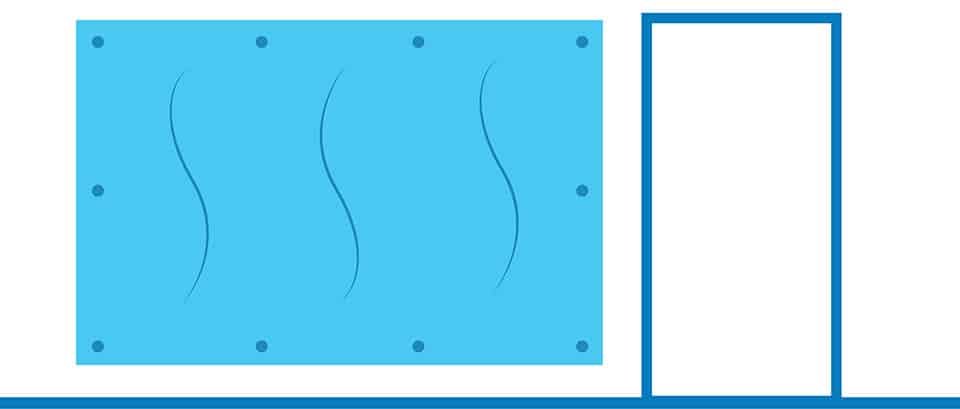
One of the first things you can do to soundproof your bedroom is to use curtains, blankets, and window treatments. For example, you could hang plush, thick curtains over the windows to block traffic noise. If the noise is coming from downstairs neighbors, use thick area rugs to insulate the floor. Better yet, place a pad underneath the rug.
Another option is to use acoustic foam and/or acoustic panels. Both options are relatively cheap and can stop noise from entering your bedroom.
If you’re looking to soundproof a room for free, you’ll have to use what you already have at home. Rugs, curtains, and blankets are all a good choice. You can also rearrange your furniture to dampen sounds.
Start by placing bookshelves and other large pieces of furniture against shared walls. Upholstered sofas and chairs can reduce the noise coming from downstairs. Thick wallpaper and blankets may dampen the sound coming from adjacent rooms, while curtains can minimize outside noise.
More Soundproofing Ideas
Have a soundproofing idea that works great that we didn’t mention? We’d love to hear it!
Drop us a comment below and we may add your suggestion to this guide!
Updates
- February 2, 2021 – Made a few minor content and layout changes. Fixed a couple of typos.
- April 16, 2019 – Made a few minor content and layout changes.
- March 31, 2019 – Updated layout and page design.
